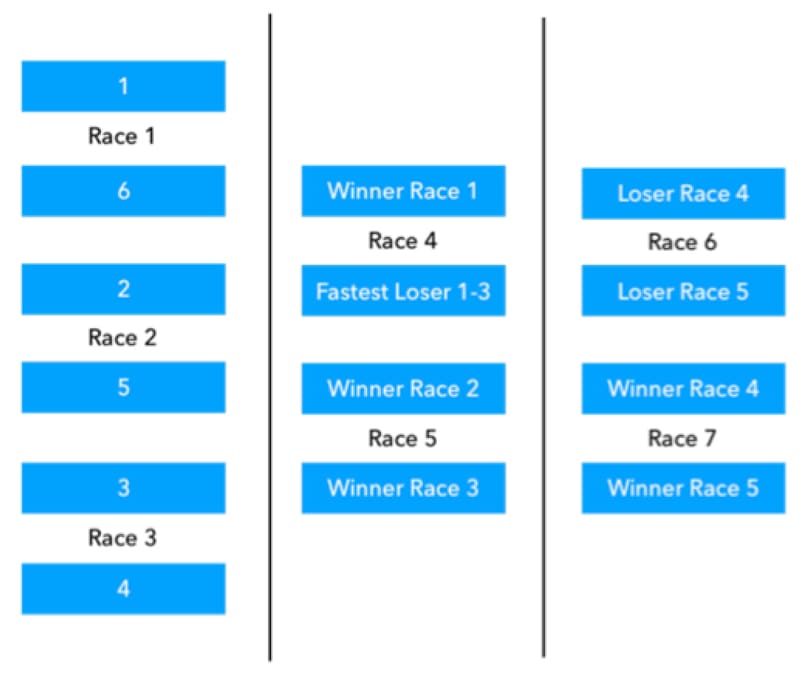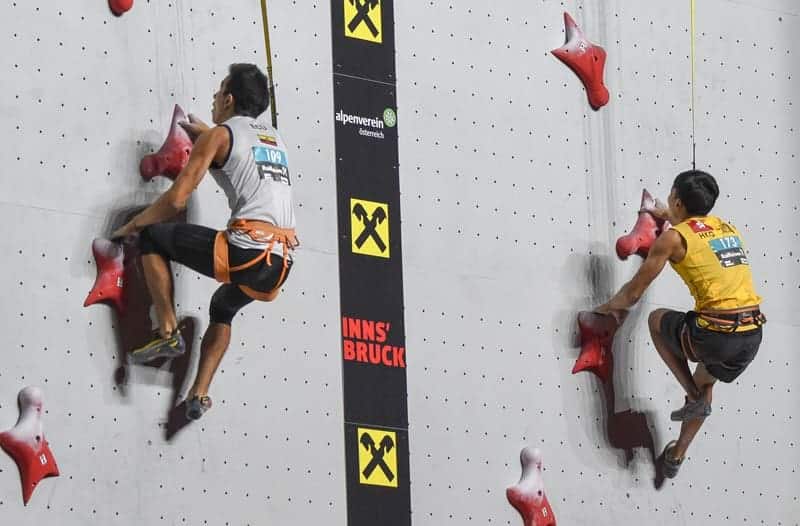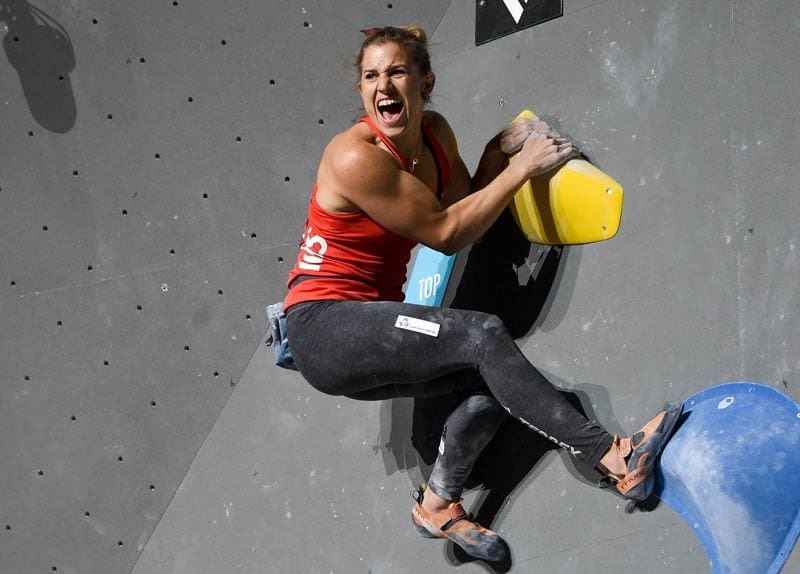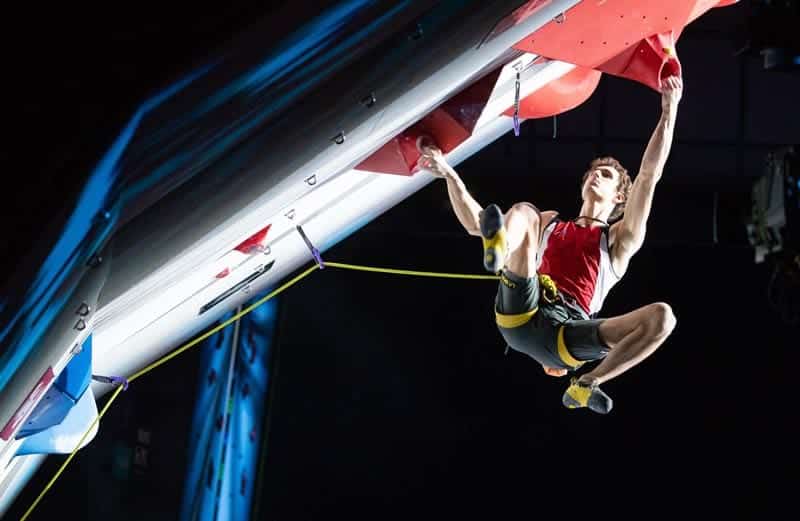The Olympic Combined Olympic Combined format was used for the first time at the 2018 World Climbing Championships in Innsbruck. The athletes compete against each other in the three disciplines of lead, speed and bouldering. How the Olympic format works, we explain to you here.
The first discipline of the Olympic combination format in climbing is speed. After a short break (15 minutes), the second discipline follows with bouldering. Finally, the athletes compete against each other in the lead (lead climbing) discipline.
The process of discipline Speed
In speed climbing in the first round, the first-placed against the sixth-placed, the runner-up against the fifth-placed and the third placed against the fourth-placed. Then it's off to a second round in which the three winners and the fastest loser of the first round duel with each other. The third and last round includes the big and the small final of the discipline Speed.


This is how the discipline of bouldering in the Olympic format works
Following the discipline Speed six athletes compete against each other. The starting list in bouldering corresponds to the reversed intermediate result (speed result). Among the six participants, one round will be held, which corresponds to the final of the single format Bouldering. This means that the six athletes complete a total of four boulders and have four minutes each.

The last discipline in the Olympic Combination format is lead climbing
In the third discipline, lead climbing, the starting list is again due to the reversal of the intermediate result. In lead climbing, the rank is the height (number of handles) achieved by the athlete. The higher the better.

That's how the ranks are made
The ranking is determined by a points system. For the creation of the ranking, the results (placement) from the three disciplines are multiplied. The fewer points that result, the better. If two athletes have the same number of points (ex-aequo), then the one who was in two disciplines wins the other. Example: Athlete A takes the first place in the discipline Speed, the third place in bouldering and the fourth place in the lead (1 x 3 x 4). He therefore has 12 points and beats athlete B, who takes the second in speed, the first in bouldering, and the sixth in the lead (2 x 1 x 6) because he achieved a higher place in speed and in the lead.
Ex-aequo cases
In the case of the World Championships, the qualification always refers to the previous individual disciplines. If two athletes have the same time in speed, the qualification is used. Your fastest qualification time is compared. In the case of two false starts in the first round, both athletes will be separated even after their time in qualification. If two athletes are tied in bouldering, the result from the qualification will be used. If two athletes achieve the same number of points in the lead, the time is used first. If there is still a tie, the result from the qualification will be used.
What happens in exceptional cases?
In the unlikely event that of three athletes each in a combination discipline once the first, once occupied the second and once the third place, so the qualification result of the combination is used. So the ranking with which the athletes started in the Olympic combination format.
—
Credits: Titelbild Moritz Lovers / KVOE, Text zVg / Austria Climbing


